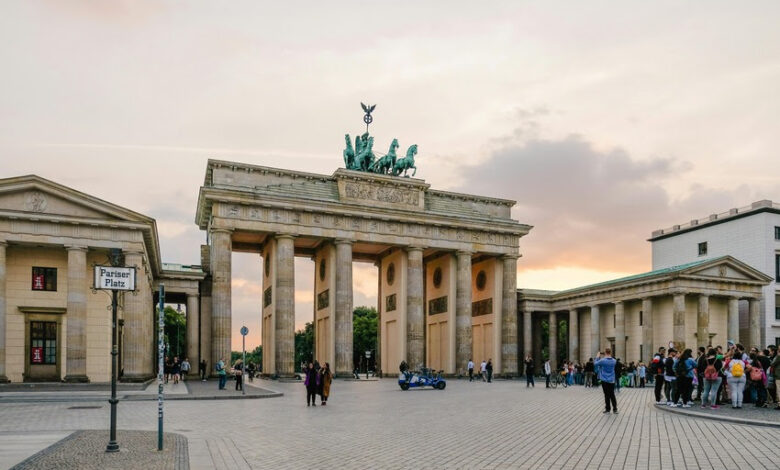Germany Joins other Schengen countries with new Schengen border restrictions

In 2025, Germany, France, Netherl
For tourists, frequent business travelers, digital nomads, and even locals commuting across borders daily, these new protocols require additional planning and patience. The reimplementation of border controls does not revoke Schengen travel privileges, but it alters how travelers engage with the system. For many, this marks a new phase in European mobility, one that blurs the long-standing promise of open borders.
Norway: Discretionary Checks at Land and Sea
Norway has maintained internal border checks throughout 2025 due to national security threats and concerns over irregular migration. Travelers entering Norway via ferry or by road from Sweden may face random inspections. Ferry terminals and road crossings now require passengers to carry valid identification, regardless of citizenship. These measures will remain in place through the end of 2025.
Sweden: Targeted Inspections from Denmark
Sweden’s controls primarily impact travelers coming from Denmark, especially those using the Øresund Bridge. The government has cited persistent national security concerns and irregular migration as reasons for maintaining internal checks throughout the year. Tourists and returning residents alike should prepare for delays and identification requests on trains, buses, and road traffic entering from Denmark.
Denmark: Ferry Ports and Road Borders Under Scrutiny
Denmark has extended internal checks for 2025, focusing on its border with Germany and key ferry ports. These inspections are conducted by police and involve random checks in border zones. Even for routine crossings, such as by car or coach, travelers should carry a passport or national ID, and be prepared for short waiting times.
Slovenia: Monitoring the Southern Migration Corridor
Slovenia has intensified inspections at its borders with Croatia and Hungary due to increased movement along southern migration routes. Since December 2024, these controls have affected road and rail travel. Spot checks and heightened surveillance are particularly directed at non-EU nationals. While border crossings remain operational, travelers may face unexpected inspection delays.
Italy: Managing Migration and National Security
Italy reinstated internal border checks in late 2024, and these are expected to continue into 2025. Authorities are monitoring crossings from Slovenia, France, and Austria, as well as high-volume airports. Travelers, whether from within the EU or outside, should expect document checks at various transit points and prepare for longer wait times, especially near high-traffic tourism hubs.
Austria: Focus on Eastern Borders
Austria has kept its borders with Slovenia and Hungary under active surveillance due to migration along the Balkan route. Fixed checkpoints and mobile police inspections are in place. For travelers entering by road or rail, carrying valid ID and allowing extra time for clearance is advised.
Netherlands: Asylum Flow Prevention and Mobile Checks
The Netherlands initiated internal checks on December 9, 2024, scheduled to last through June 8, 2025. These mobile checks are concentrated near borders with Belgium and Germany. Transport hubs, including trains and major roads, may be subject to inspection. While checks are selective, delays can affect both short-term and transit travelers.
France: Heightened Security Following Olympic Year
France has maintained border checks since November 2024 and may extend them beyond the current April 30, 2025, deadline. These measures are linked to terrorism concerns and civil unrest from ongoing political demonstrations. Travelers entering via road, train, or air—especially from Germany, Italy, Spain, and Belgium—should expect document verification, particularly during public events or large gatherings.
Germany: Broad Land Border Enforcement
Germany has reintroduced comprehensive land border controls as of September 2024, now extended until at least September 15, 2025. All borders—including those with Poland, Austria, Czechia, France, Switzerland, and the Netherlands—are affected. Random ID checks and traffic stops are now a regular feature of intra-Schengen travel into Germany. Cross-border commuters and tourists should factor in 30–60 extra minutes for overland journeys.
Bulgaria: A Special Case in Schengen Integration
Having joined the Schengen Zone for air and sea borders in January 2025, Bulgaria has implemented selective internal controls at key airports and sea terminals. This transitional measure supports its gradual integration into full Schengen membership. Travelers arriving at these points should expect internal ID screening, even for intra-Schengen flights.
What Travelers Need to Know Now
While the core Schengen framework remains intact, the reintroduction of internal checks affects how travelers prepare and move within the zone. Whether journeying for business, leisure, or family reasons, the following precautions are now necessary:
- Always carry a valid passport or national ID, even for short cross-border trips.
- Keep travel documentation—hotel bookings, return tickets, and itinerary—readily accessible.
- Plan for additional time at land crossings and rail checkpoints.
- Expect inspections on intra-Schengen flights, particularly when flying into countries with active border controls.
- Be aware of delays during political events, protests, or international summits, as temporary controls may tighten further.
Impact on the Travel Industry
Tour operators, airlines, rail services, and bus companies are already adjusting schedules and advisories in response to these controls. Cross-border tourism packages now include information about border delays, and companies are training staff to support travelers facing unexpected inspections.
Moreover, increased controls may shift traveler behavior. Some tourists may favor direct flights or single-country stays to avoid added complications. Others might delay or cancel multi-country itineraries, reducing demand for trans-European rail and bus travel in the short term.
Global Context and Long-Term Implications
These internal controls do not mean the end of Schengen’s principles, but they mark a recalibration of how Europe manages mobility during times of stress. Similar trends are visible elsewhere: the United States has reintroduced stricter land border inspections; Australia has redefined visa pathways with embedded security protocols; and Japan has installed AI-based customs screening at airports.
In this global context, Europe’s temporary internal border measures reflect a balancing act between freedom of movement and national security. Whether these controls remain short-lived or evolve into more permanent systems will depend on the political, social, and security landscapes of the months to come.
Looking Ahead: How Travelers Can Adapt
Those traveling through the Schengen Area in 2025 and beyond should take a proactive approach:
- Sign up for travel alerts from consulates and regional tourism boards.
- Use apps and websites to check real-time border status, especially for road and rail.
- Schedule buffer time between connections, particularly for journeys that cross affected borders.
- Consider travel insurance that covers delays linked to border checks or missed connections.
Ultimately, the reintroduction of internal border controls across Europe marks a significant but manageable shift in how travelers experience the Schengen Area. While the convenience of borderless travel has been temporarily modified, preparedness and awareness can help ensure that journeys remain smooth, safe, and enjoyable.





